
Mind Expanders
Under the title "Mind expanders: Performative Bodies - utopian Architectures around 1968," the Vienna MUMOK presents utopian, visionary, and experimental architectural concepts that responded to technological advancements, societal changes of 1968, and new lifestyles in the contemporary context. Here, we find early projects from leading Austrian architects such as Hans Hollein, Coop Himmelb(l)au, Haus-Rucker-Co, along with international inspirations from Archigram, Ant Farm, or Superstudio. At the same time, through the social dimension and new understanding of the phenomena of time-space-action, it connects performative forms of art and architecture.
The exhibition opens with the statement from Hans Hollein, "Alles ist Architektur" (Everything is architecture) from the eponymous manifesto from 1967. The sixties was a time of unlimited technical possibilities, the development of space research, and the beginnings of the use of computer programs and systems. Another phenomenon was the new mass expansion of telephones and televisions as new means of the "media society." Increased mobility in society raised the demands for variability and flexibility. Such considerations were incorporated into their utopian projects by architects from Archigram in projects like Walking city (1964), Instant city Airship (1968), or Hollein in the proposal for the expansion of the University of Vienna consisting of a television receiver and a drawn oversized plug, or in the action of an inflatable portable office.
Models by Hans Hollein and Walter Pichler represent work from the early sixties, where their interest in plastic, sculptural architecture is evident, inspired by cult monumental culture, technology, and war. The works of Hollein and Pichler build on earlier activities from 1958 when Friedensreich Hundertwasser, Arnulf Rainer, and Markus Prachensky published texts that opposed the prevailing rationalism in architecture, the dictate of the right angle and white color, and functionalism in architecture (Friedensreich Hundertwasser: Verschimmlungsmanifest; Arnulf Rainer, Markus Prachensky: Architektur mit eigenen Händen). Hollein and Pichler perceive architecture as an internal, spiritual arrangement realized through building. According to Hollein, architecture is cult-like. Architecture is without purpose. Form does not follow function. The breadth of Hans Hollein's means of expression is not limited to sculptural models, but also draws on pop art and works with collages and concepts. Additionally, Hollein and Pichler publish the magazine Bau, which becomes the most important platform for themselves (Hollein) and for new trends in architecture and society.
Many visionary projects arose in Karel Schwanz's studio at the Vienna University of Technology. Here, a more differentiated, expressive, organic, and archaic vocabulary took shape. Karel Schwanz's assistant, Günther Feuerstein, organized the so-called Club Seminars at the Gallery nächst St. Stephan from 1964 to 1968, which aimed to inform about contemporary developments in architecture and became a platform for the "visionary-activist" movement of the second half of the sixties. Groups such as Haus-Rucker-Co (Laurids Ortner, Günther Zamp Kelp, Klaus Pinter) and Coop Himmelblau (Wolf D. Prix, Helmut Swizinsky), Zünd Up, and others formed in Schwanz's studio and the club seminars.
The activities of Günther Domenig and Eilfried Huth in Graz should not be overlooked.
A major theme was air structures, inflatable balloons, spheres, and similar objects. They redefine the human environment, responding to demands for mobility, flexibility, and temporariness. Often, they involve one-time actions in public spaces, which are characterized by wit and irony.
The main project that Coop Himmelblau focused on was Villa Rosa, further developed as "Cloud" projects. The concept of Coop Himmelblau stated: a house as a compact environment on wheels, a house made from a can. Architecture as light as air. Coop Himmelblau describes their project as forms of future housing that, thanks to mobile and transforming spaces, expand the possibilities of experiencing living. The description of the construction intended for Documenta V (1972) in Kassel (which ultimately was not realized due to financial constraints) was as follows: technically consists of a mobile chassis, a transporter on which a can is mounted on a hydraulic frame, through which a person accesses a platform, a folding platform; the platform is constructed so that various arrangements are possible. For Documenta-Cloud, it is planned to adapt the platform as a landscape for lounging and resting; the heartbeat of visitors will be transmitted in optical and acoustic signals to create a connection between the space and the person and to cause the space to change with the visitors. The platform offers space for 20-30 people, hovers at a height of 7.5 meters, and is surrounded by a pneumatic shell, a transparent sphere with a diameter of 10 meters.
(Coop Himmelblau)
At Coop Himmelblau, there is a notable interest in the physical and psychological effects of space and environment on humans. They electronically transmit haptic and mimetic expressions of humans and transform space through sound, color, and smells. Günther Feuerstein even attributed a kind of clinical and erotic quality to the playful elements of their projects, referencing the tradition of Viennese medicine, particularly surgery, and Freud's psychoanalysis.
The device Mind Expander is a project by Haus-Rucker-Co from 1967. It proposes new forms of utilizing technical possibilities for expanding consciousness, creating a new living space for the coexistence of man and woman: ...a chair for two people, a man and a woman, above them a PVC balloon. You help the girl to sit down, then you. The girl sits a bit higher, her legs resting on your right thigh. You close the balloon and turn on the metronome... The beats of the metronome are quiet and regular. Your eyes follow the red and blue lines of the balloon. Your breath slowly travels through your body, your heart beats more calmly. The girl next to you breathes just like you, slowly and evenly. You have forgotten whether the girl is a brunette or a blonde. The girl's legs are weightless; you do not feel them. You do not feel her skin or the arm she placed around your shoulders. She is simply there, without you thinking about her. Very deeply, she merges. Everything flows. The girl is in your breath and your eyes. You think only of breathing. You feel as though you are being breathed. Pink dots circle before your eyes, your eyes move in rhythm with your breath. Over the blue and red lines. The lines become the beat, the beat becomes your breath. The circle begins to close. You are happy. The journey has begun.
(Haus-Rucker-Co)
The most spectacular achievement of Haus-Rucker-Co, however, was "Gigantic billiard" (1970) at the Museum of the 20th Century in Vienna. It consisted of a giant inflatable mattress bordered like a boxing ring and two free balls on the surface of the mattress. Visitors were invited to participate in the game, relax, and enjoy their time spent in the museum. The whole event was repeated in New York, where Haus-Rucker-Co also presented an edible model of Central Park. Gigantic Billiard expands the possibilities for object installations in established museums, and it could be said that it parodies and anticipates the new functions of the museum institution as a way of spending leisure time and a participatory approach to the viewer.
Additionally, they are the authors of Infusion of the Rhine (1970), or "Schools of Walking" (1971), a kind of path-skeleton installed on the occasion of the opening of Vienna's "Graben" (moats) as a pedestrian zone.
Touchpoints between architecture and action art exist in the understanding of space, in interventions into public space (on the second floor dedicated to performative and action art, we also find performances by Jiří Kovanda). Another level is sociocritical, stemming from the events of the troubled year 1968 and criticism of conservative society. The groups are also personally interconnected; for example, members of the Zünd-up group participated in some performances by the Viennese Actionists.
Two videos are also worth noting, namely Gordon-Matta-Clark and his process of creative destruction. In houses slated for demolition, he breaks interiors and floors, opening "new interiors" - unexpected views, shapes, and perspectives. Valie Export explores space with two cameras attached to her body from the front and back, straddling the boundary between film and photography.
The exhibition is inspiring, witty, and shows that the legacy of the 60s is still alive in Austria - also thanks to the work of Hans Hollein and Wolf Prix at the Vienna University of Applied Arts. On the other hand, one cannot shake the impression of a certain incongruity regarding the objects intended for outdoor public spaces. There is also the question of why curator Eberhardt Köb, the current director of MUMOK, did not mention Japanese metabolists as an international inspiration, and there are questions about the selection of specific projects from individual groups. While visionary and artistic projects are among the most significant contributions of Austrian architecture since 1945 (Geschichte der bildenden Kunst in Österreich, 20. Jahrhundert, p. 460), the absence of a catalog for the exhibition is a shortcoming, especially as many texts and videos have not been translated into English and are available only in German. The only English catalog exists for the Venice Biennale 1996, where visionary architecture from the 60s and 70s was also presented.
Feuerstein: Visionary architecture in Austria in the Sixties and Seventies, Biennale di Venezia, 1996
Geschichte der bildenden Kunst in Österreich, 20. Jahrhundert, München, 1992
Exhibition a_schau: Architekturzentrum Wien
Magazine Bau 1968/69
The exhibition opens with the statement from Hans Hollein, "Alles ist Architektur" (Everything is architecture) from the eponymous manifesto from 1967. The sixties was a time of unlimited technical possibilities, the development of space research, and the beginnings of the use of computer programs and systems. Another phenomenon was the new mass expansion of telephones and televisions as new means of the "media society." Increased mobility in society raised the demands for variability and flexibility. Such considerations were incorporated into their utopian projects by architects from Archigram in projects like Walking city (1964), Instant city Airship (1968), or Hollein in the proposal for the expansion of the University of Vienna consisting of a television receiver and a drawn oversized plug, or in the action of an inflatable portable office.
Models by Hans Hollein and Walter Pichler represent work from the early sixties, where their interest in plastic, sculptural architecture is evident, inspired by cult monumental culture, technology, and war. The works of Hollein and Pichler build on earlier activities from 1958 when Friedensreich Hundertwasser, Arnulf Rainer, and Markus Prachensky published texts that opposed the prevailing rationalism in architecture, the dictate of the right angle and white color, and functionalism in architecture (Friedensreich Hundertwasser: Verschimmlungsmanifest; Arnulf Rainer, Markus Prachensky: Architektur mit eigenen Händen). Hollein and Pichler perceive architecture as an internal, spiritual arrangement realized through building. According to Hollein, architecture is cult-like. Architecture is without purpose. Form does not follow function. The breadth of Hans Hollein's means of expression is not limited to sculptural models, but also draws on pop art and works with collages and concepts. Additionally, Hollein and Pichler publish the magazine Bau, which becomes the most important platform for themselves (Hollein) and for new trends in architecture and society.
Many visionary projects arose in Karel Schwanz's studio at the Vienna University of Technology. Here, a more differentiated, expressive, organic, and archaic vocabulary took shape. Karel Schwanz's assistant, Günther Feuerstein, organized the so-called Club Seminars at the Gallery nächst St. Stephan from 1964 to 1968, which aimed to inform about contemporary developments in architecture and became a platform for the "visionary-activist" movement of the second half of the sixties. Groups such as Haus-Rucker-Co (Laurids Ortner, Günther Zamp Kelp, Klaus Pinter) and Coop Himmelblau (Wolf D. Prix, Helmut Swizinsky), Zünd Up, and others formed in Schwanz's studio and the club seminars.
The activities of Günther Domenig and Eilfried Huth in Graz should not be overlooked.
A major theme was air structures, inflatable balloons, spheres, and similar objects. They redefine the human environment, responding to demands for mobility, flexibility, and temporariness. Often, they involve one-time actions in public spaces, which are characterized by wit and irony.
The main project that Coop Himmelblau focused on was Villa Rosa, further developed as "Cloud" projects. The concept of Coop Himmelblau stated: a house as a compact environment on wheels, a house made from a can. Architecture as light as air. Coop Himmelblau describes their project as forms of future housing that, thanks to mobile and transforming spaces, expand the possibilities of experiencing living. The description of the construction intended for Documenta V (1972) in Kassel (which ultimately was not realized due to financial constraints) was as follows: technically consists of a mobile chassis, a transporter on which a can is mounted on a hydraulic frame, through which a person accesses a platform, a folding platform; the platform is constructed so that various arrangements are possible. For Documenta-Cloud, it is planned to adapt the platform as a landscape for lounging and resting; the heartbeat of visitors will be transmitted in optical and acoustic signals to create a connection between the space and the person and to cause the space to change with the visitors. The platform offers space for 20-30 people, hovers at a height of 7.5 meters, and is surrounded by a pneumatic shell, a transparent sphere with a diameter of 10 meters.
(Coop Himmelblau)
At Coop Himmelblau, there is a notable interest in the physical and psychological effects of space and environment on humans. They electronically transmit haptic and mimetic expressions of humans and transform space through sound, color, and smells. Günther Feuerstein even attributed a kind of clinical and erotic quality to the playful elements of their projects, referencing the tradition of Viennese medicine, particularly surgery, and Freud's psychoanalysis.
The device Mind Expander is a project by Haus-Rucker-Co from 1967. It proposes new forms of utilizing technical possibilities for expanding consciousness, creating a new living space for the coexistence of man and woman: ...a chair for two people, a man and a woman, above them a PVC balloon. You help the girl to sit down, then you. The girl sits a bit higher, her legs resting on your right thigh. You close the balloon and turn on the metronome... The beats of the metronome are quiet and regular. Your eyes follow the red and blue lines of the balloon. Your breath slowly travels through your body, your heart beats more calmly. The girl next to you breathes just like you, slowly and evenly. You have forgotten whether the girl is a brunette or a blonde. The girl's legs are weightless; you do not feel them. You do not feel her skin or the arm she placed around your shoulders. She is simply there, without you thinking about her. Very deeply, she merges. Everything flows. The girl is in your breath and your eyes. You think only of breathing. You feel as though you are being breathed. Pink dots circle before your eyes, your eyes move in rhythm with your breath. Over the blue and red lines. The lines become the beat, the beat becomes your breath. The circle begins to close. You are happy. The journey has begun.
(Haus-Rucker-Co)
The most spectacular achievement of Haus-Rucker-Co, however, was "Gigantic billiard" (1970) at the Museum of the 20th Century in Vienna. It consisted of a giant inflatable mattress bordered like a boxing ring and two free balls on the surface of the mattress. Visitors were invited to participate in the game, relax, and enjoy their time spent in the museum. The whole event was repeated in New York, where Haus-Rucker-Co also presented an edible model of Central Park. Gigantic Billiard expands the possibilities for object installations in established museums, and it could be said that it parodies and anticipates the new functions of the museum institution as a way of spending leisure time and a participatory approach to the viewer.
Additionally, they are the authors of Infusion of the Rhine (1970), or "Schools of Walking" (1971), a kind of path-skeleton installed on the occasion of the opening of Vienna's "Graben" (moats) as a pedestrian zone.
Touchpoints between architecture and action art exist in the understanding of space, in interventions into public space (on the second floor dedicated to performative and action art, we also find performances by Jiří Kovanda). Another level is sociocritical, stemming from the events of the troubled year 1968 and criticism of conservative society. The groups are also personally interconnected; for example, members of the Zünd-up group participated in some performances by the Viennese Actionists.
Two videos are also worth noting, namely Gordon-Matta-Clark and his process of creative destruction. In houses slated for demolition, he breaks interiors and floors, opening "new interiors" - unexpected views, shapes, and perspectives. Valie Export explores space with two cameras attached to her body from the front and back, straddling the boundary between film and photography.
The exhibition is inspiring, witty, and shows that the legacy of the 60s is still alive in Austria - also thanks to the work of Hans Hollein and Wolf Prix at the Vienna University of Applied Arts. On the other hand, one cannot shake the impression of a certain incongruity regarding the objects intended for outdoor public spaces. There is also the question of why curator Eberhardt Köb, the current director of MUMOK, did not mention Japanese metabolists as an international inspiration, and there are questions about the selection of specific projects from individual groups. While visionary and artistic projects are among the most significant contributions of Austrian architecture since 1945 (Geschichte der bildenden Kunst in Österreich, 20. Jahrhundert, p. 460), the absence of a catalog for the exhibition is a shortcoming, especially as many texts and videos have not been translated into English and are available only in German. The only English catalog exists for the Venice Biennale 1996, where visionary architecture from the 60s and 70s was also presented.
Sources
Günther Feuerstein: Visionäre Architektur 1958-88, Berlin, 1988Feuerstein: Visionary architecture in Austria in the Sixties and Seventies, Biennale di Venezia, 1996
Geschichte der bildenden Kunst in Österreich, 20. Jahrhundert, München, 1992
Exhibition a_schau: Architekturzentrum Wien
Magazine Bau 1968/69
The English translation is powered by AI tool. Switch to Czech to view the original text source.
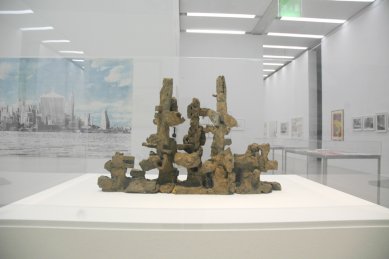
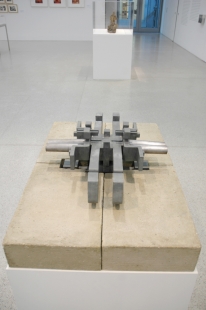
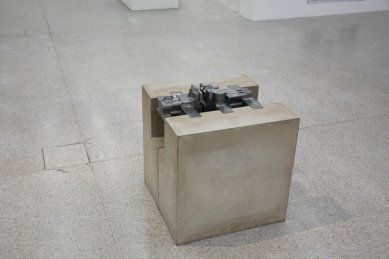
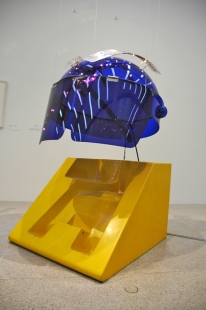
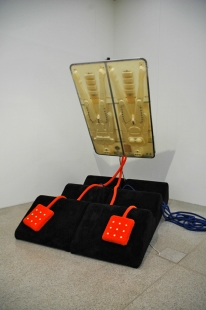
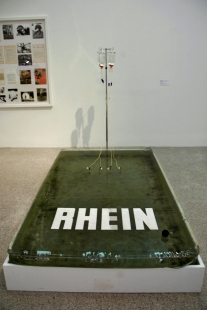
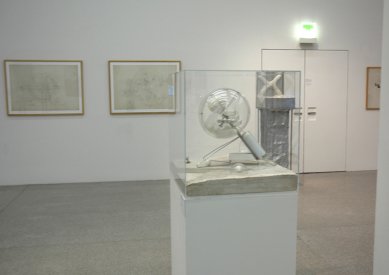
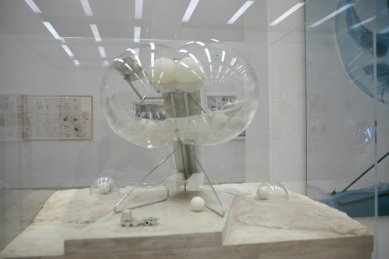
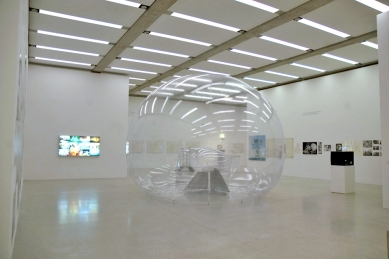

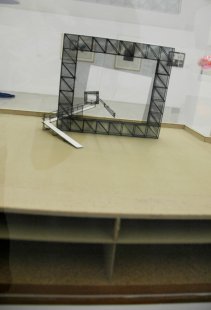
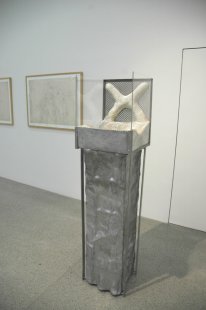
0 comments
add comment












